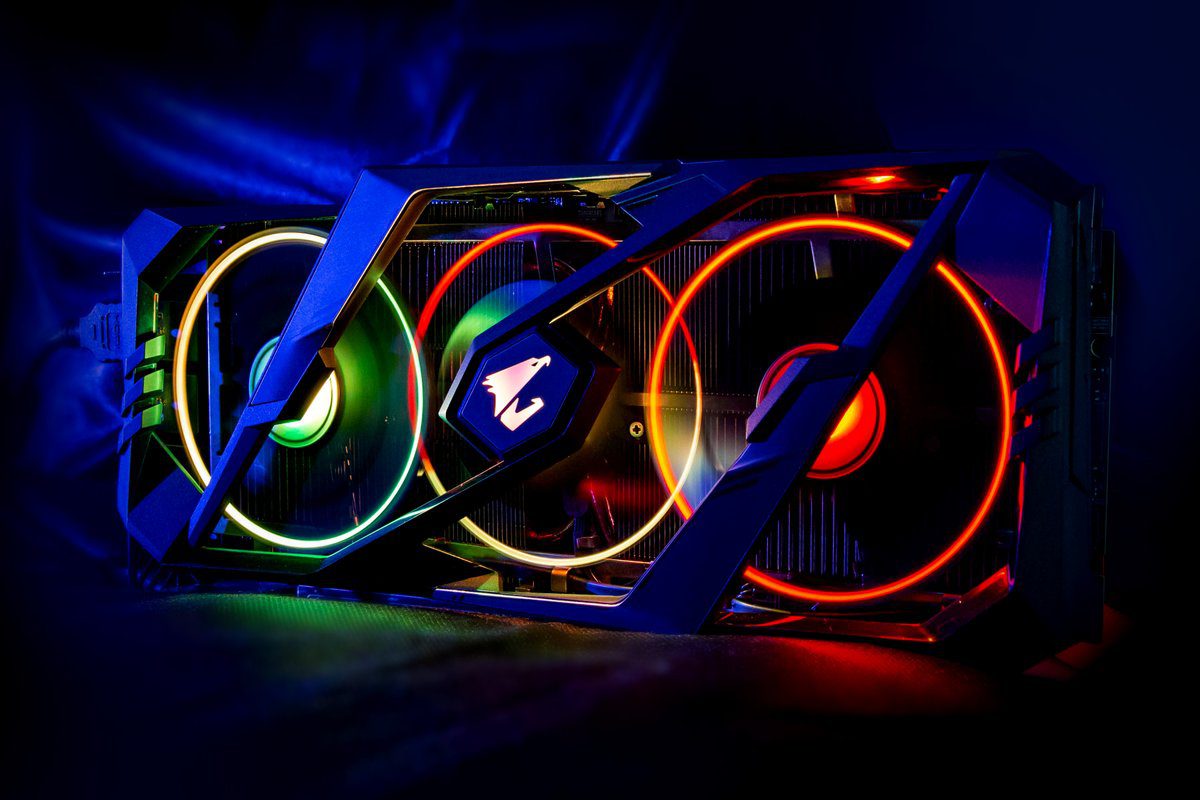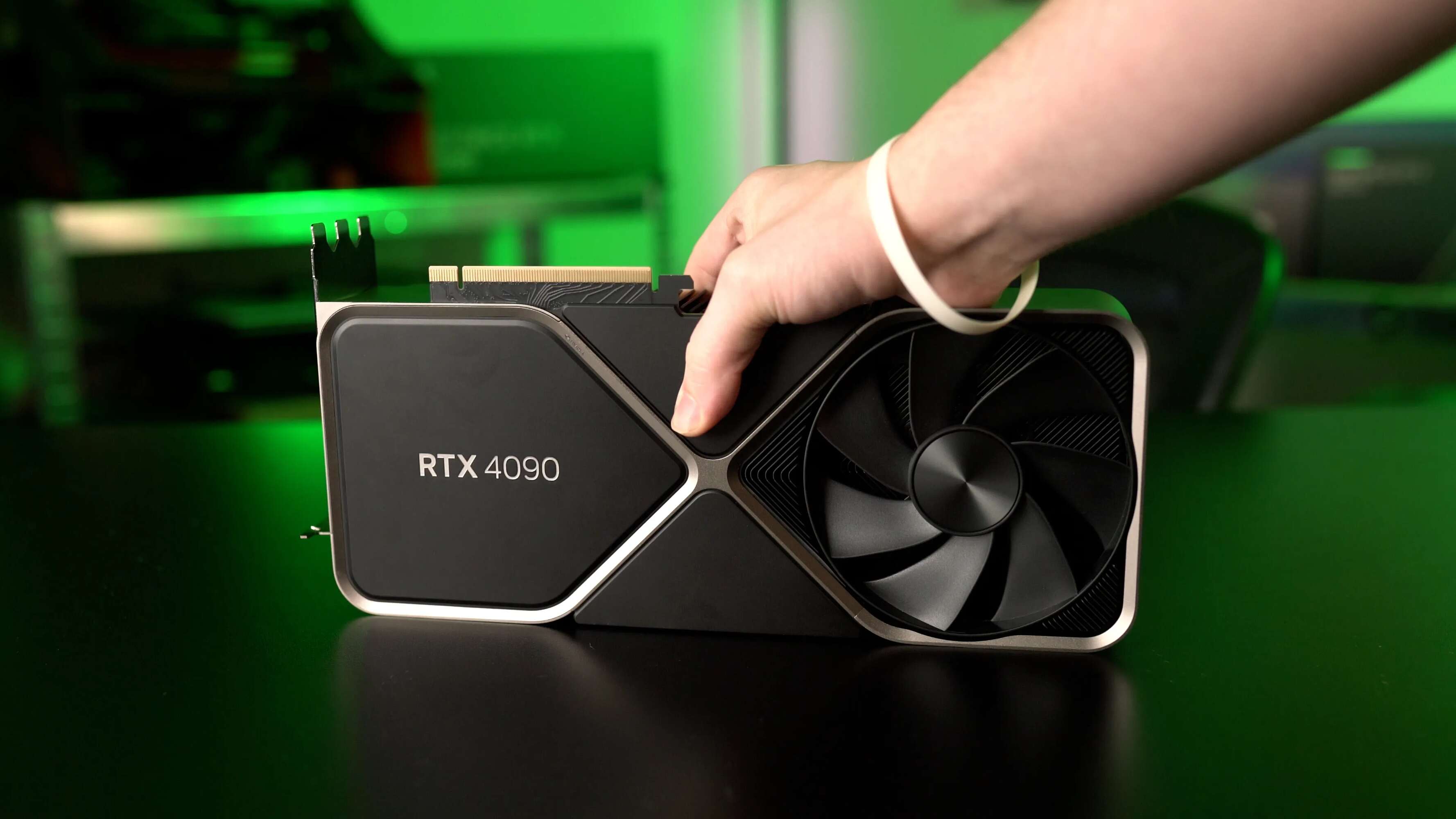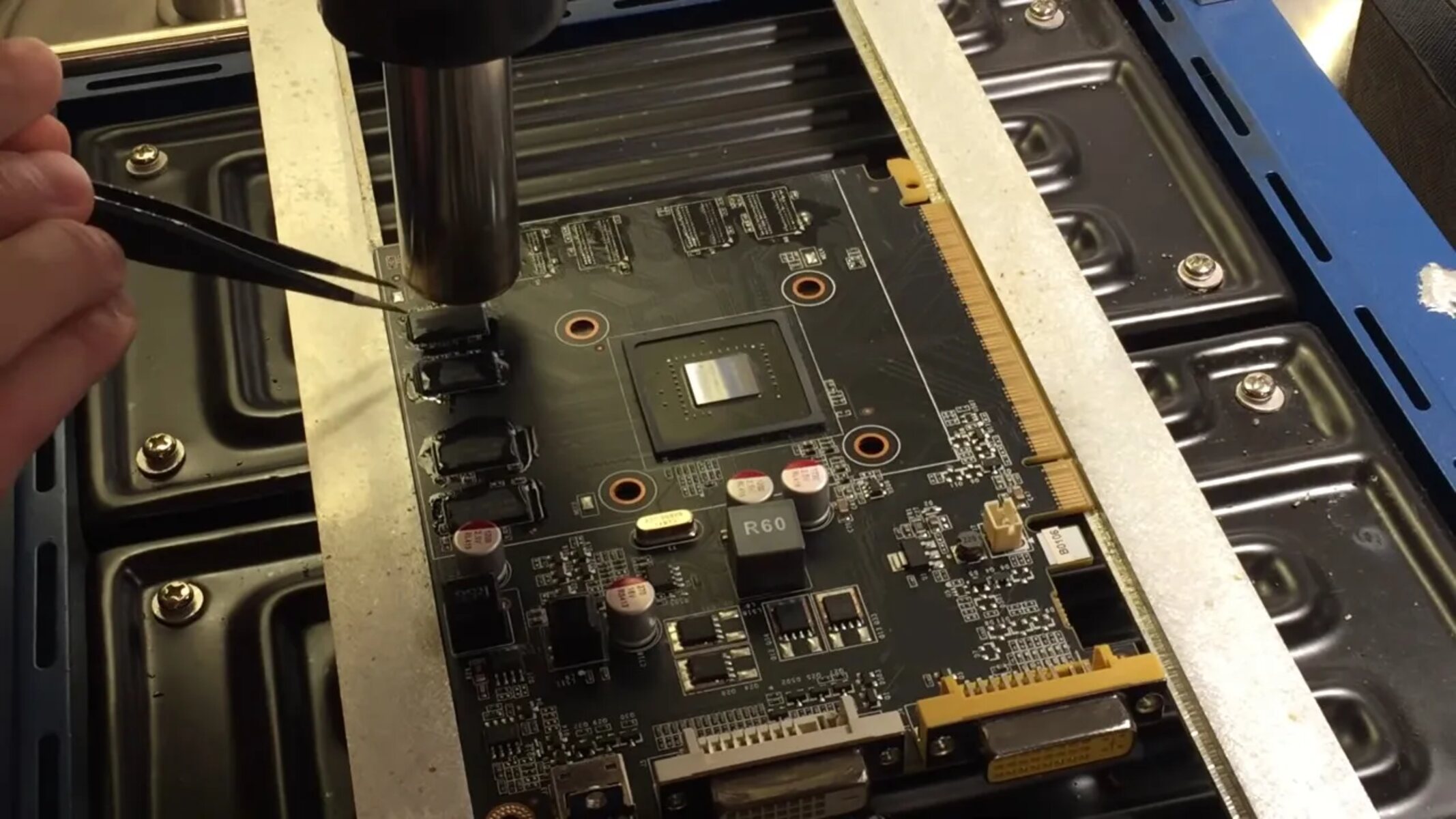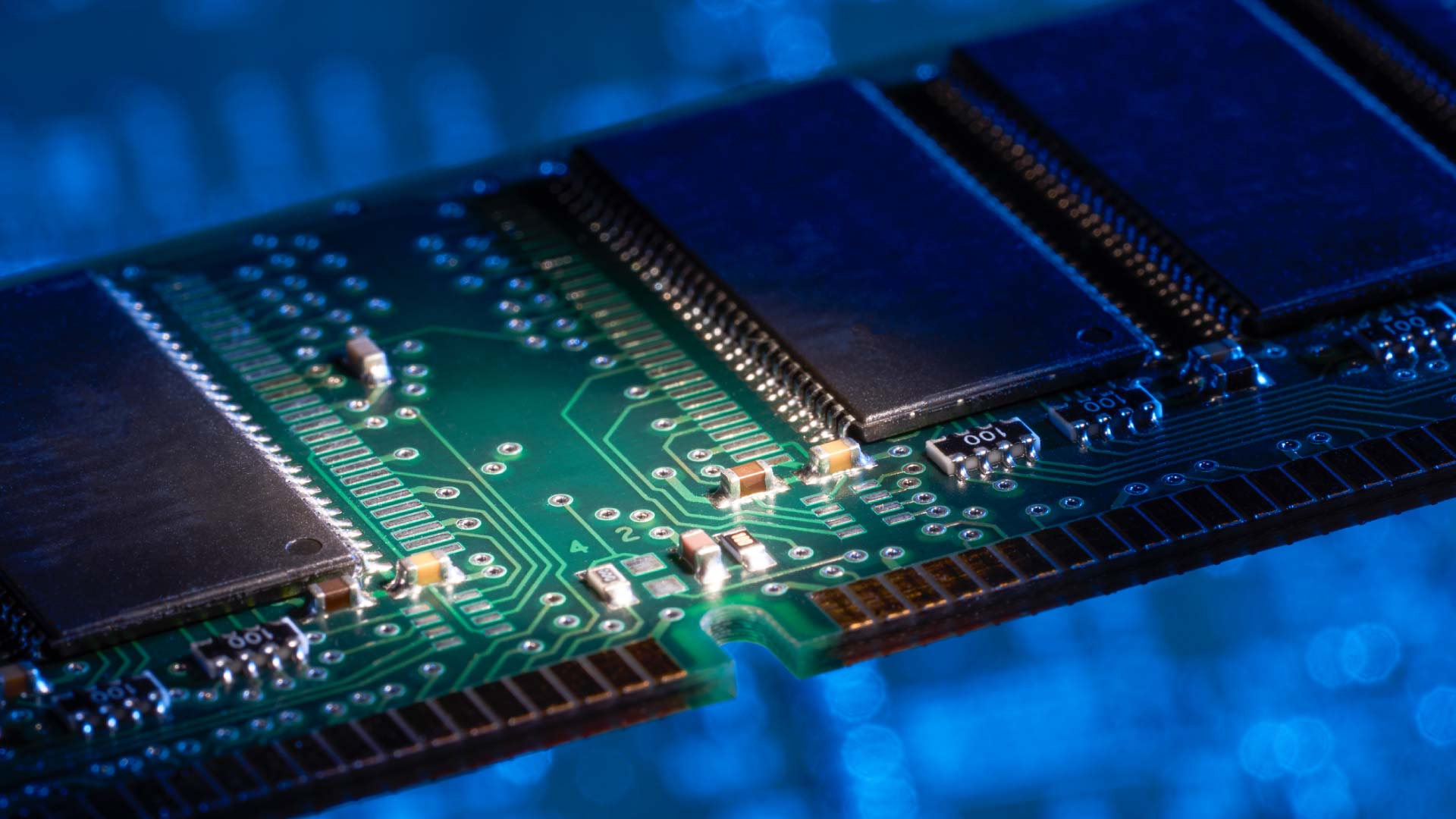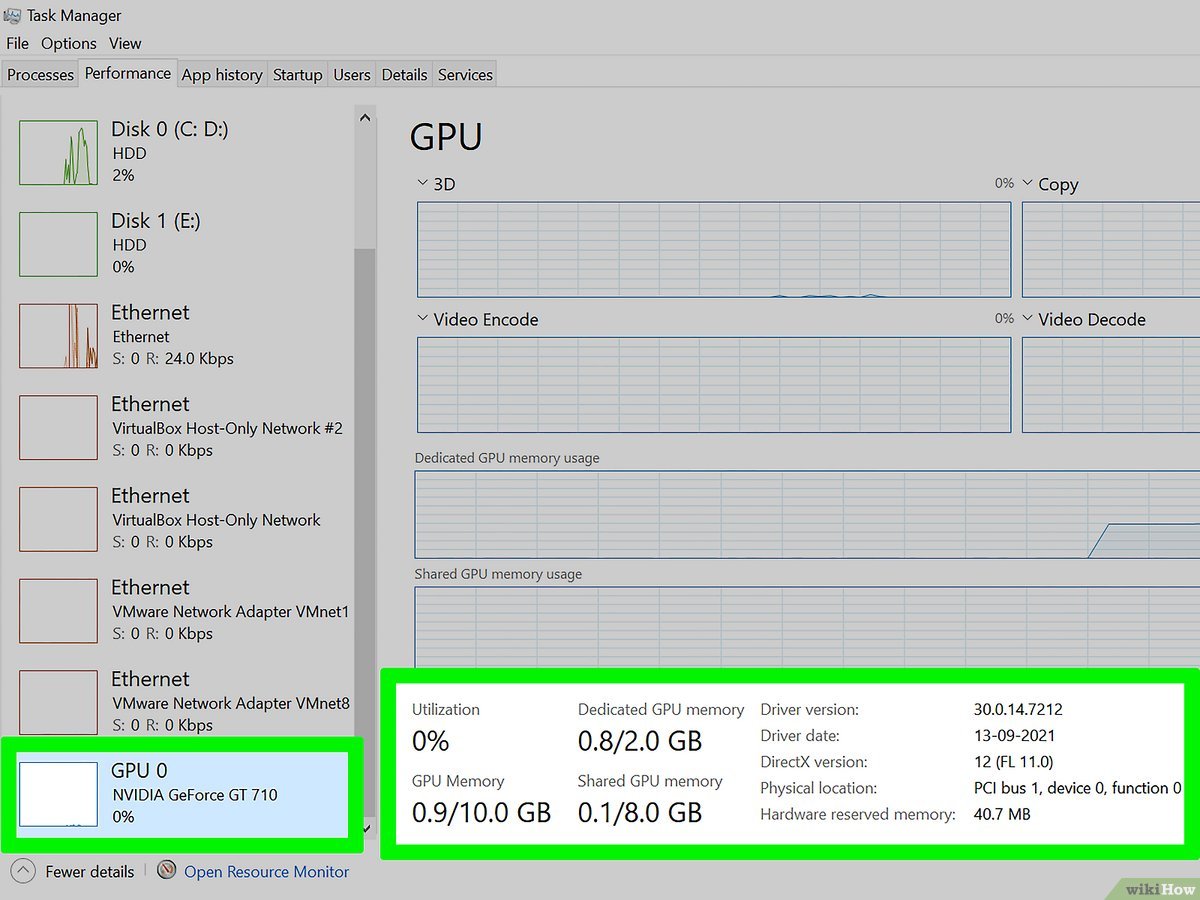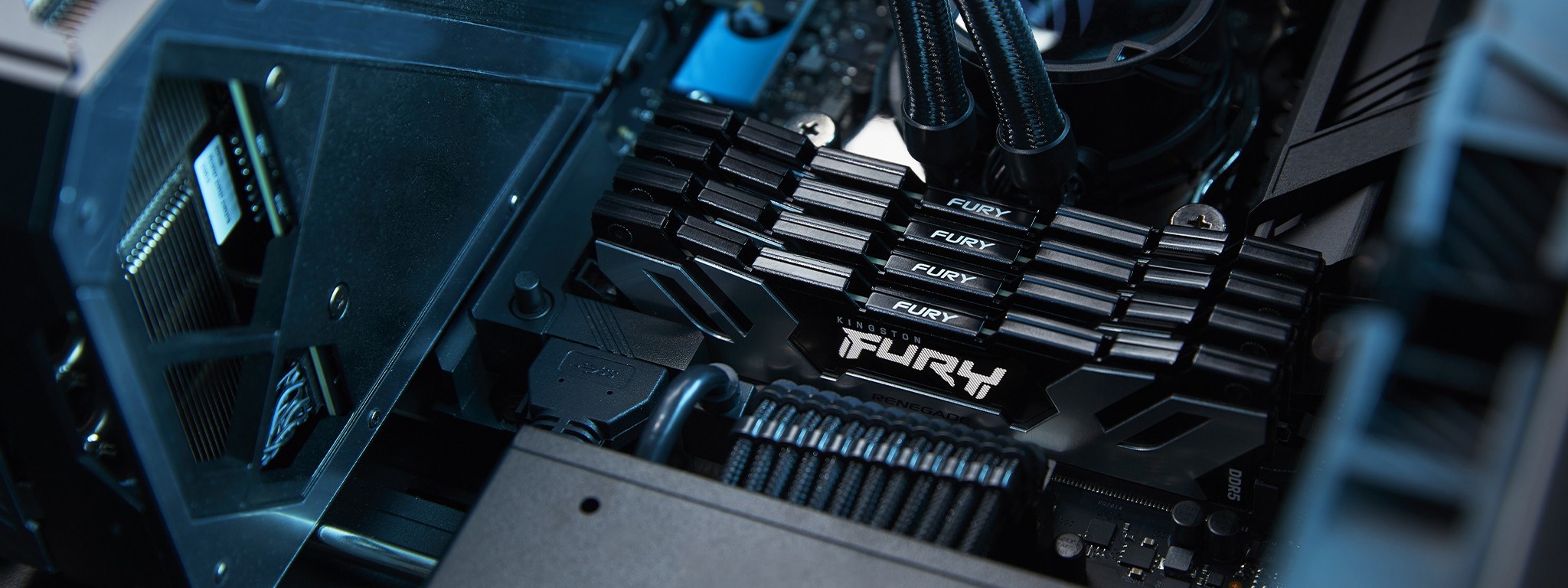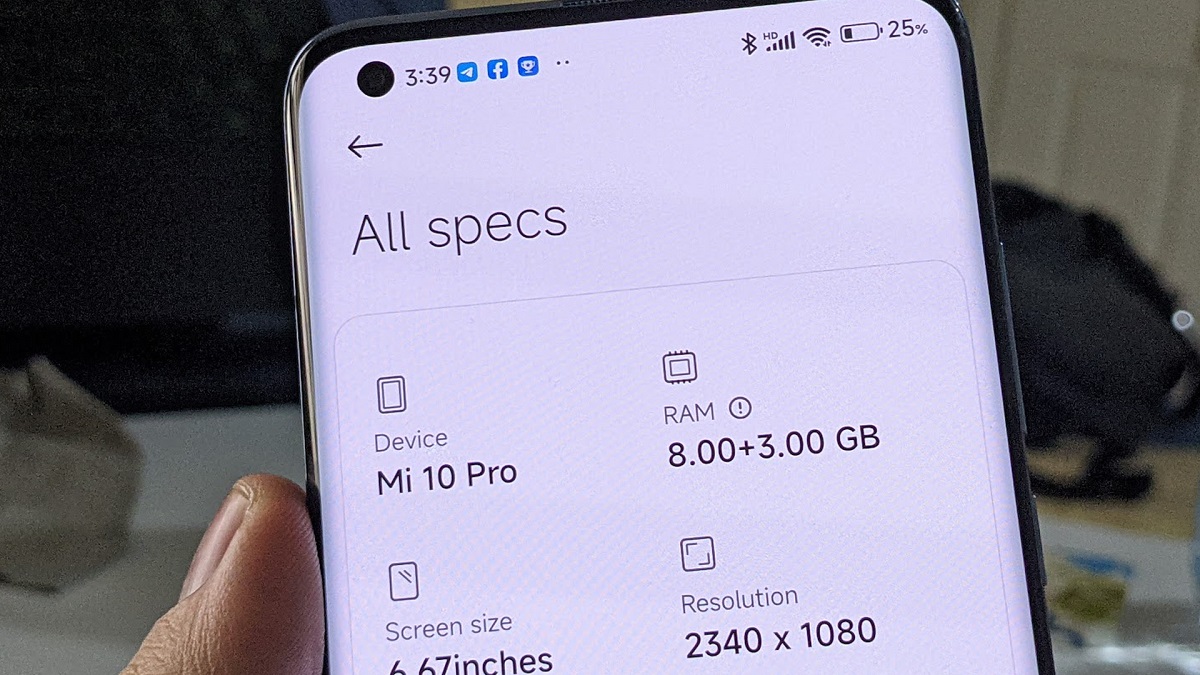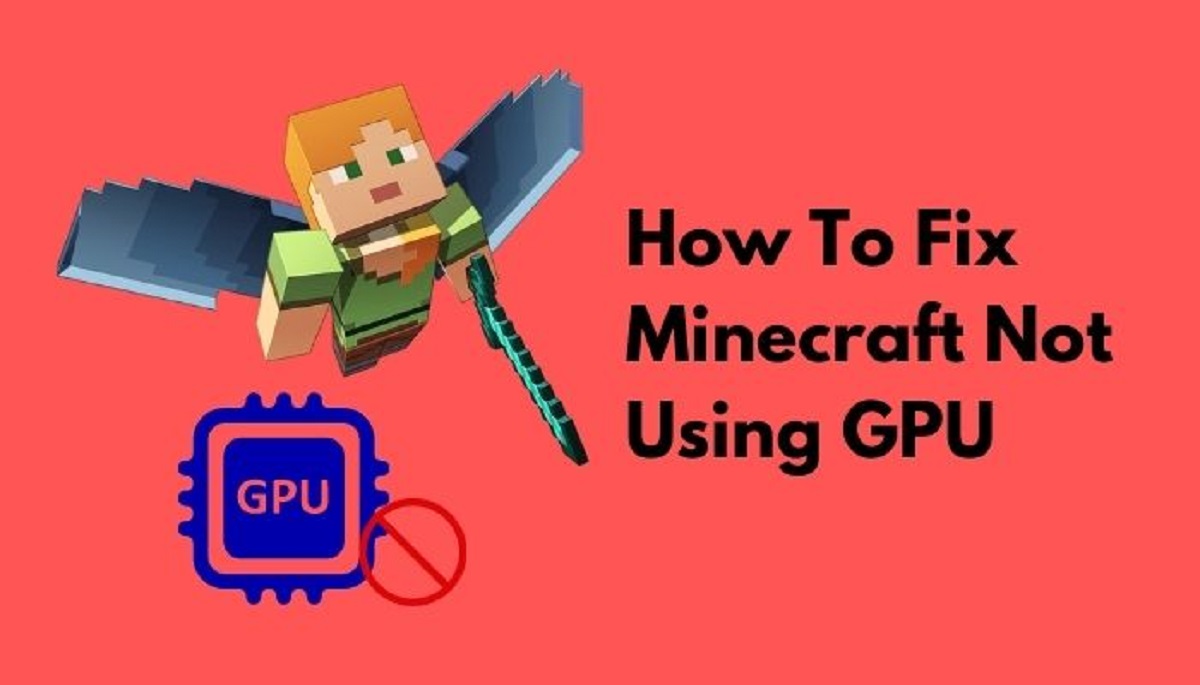Introduction
When it comes to optimizing your computer’s performance for graphics-intensive tasks, such as gaming, video editing, 3D modeling, or machine learning, understanding the role of GPU RAM is crucial. GPU, or Graphics Processing Unit, is responsible for handling all graphics-related tasks, and the amount of RAM available on your GPU plays a significant role in determining its capabilities.
GPU RAM, also known as video RAM or VRAM, is specifically designed to store and access data for rendering and displaying images and videos. Similar to how your computer’s system RAM is essential for overall performance, GPU RAM is crucial for delivering smooth and visually stunning graphics.
As technology advances and software becomes more demanding, the amount of GPU RAM required for optimal performance becomes increasingly important. This is particularly relevant when considering activities that rely heavily on graphics processing, such as gaming, video editing, and 3D modeling. Additionally, emerging technologies like machine learning and artificial intelligence also benefit from having ample GPU RAM.
However, determining the right amount of GPU RAM can be a challenge. It depends on several factors, including the specific tasks you’ll be performing, the software you’ll be using, and how future-proof you want your system to be. In this article, we will explore the importance of GPU RAM, discuss the factors to consider when determining the appropriate amount, and provide recommendations for different activities.
Understanding GPU RAM
GPU RAM, or video RAM (VRAM), is a dedicated memory component on a graphics card that is specifically designed to handle the processing and storage of graphical data. It serves as a crucial resource for the GPU to store and access textures, shaders, frame buffers, and other graphical elements required for rendering images and videos on your computer screen.
Unlike your computer’s system RAM, which handles general tasks for the operating system and applications, GPU RAM is optimized for the parallel processing required in graphics-intensive tasks. It is much faster than system RAM and has a higher bandwidth to ensure quick access to the data needed for rendering complex visuals.
The capacity of GPU RAM determines how much graphical data can be stored and accessed at any given time. This directly impacts the performance of your GPU, especially in scenarios where large and high-resolution textures, advanced visual effects, or real-time rendering are involved.
Moreover, the type and speed of the GPU memory, such as GDDR5, GDDR6, or HBM2, also influence the GPU’s overall performance. Higher memory speeds and more advanced memory technologies allow for faster data transfer between the GPU and VRAM, resulting in improved graphics processing and smoother frame rates.
It is important to note that while GPU RAM is dedicated solely to graphics-related tasks, the amount of system RAM in your computer also plays a role in overall performance. Insufficient system RAM can bottleneck the GPU’s operation, limiting the applications and multitasking capabilities of your system. Therefore, a balance between system RAM and GPU RAM is essential for optimal performance.
Understanding the importance and functionality of GPU RAM is crucial when considering tasks that require intensive graphics processing. In the following sections, we will explore the factors that determine the appropriate amount of GPU RAM for different activities, such as gaming, video editing, 3D modeling, and machine learning.
Importance of GPU RAM
The importance of GPU RAM cannot be overstated, especially when it comes to graphics-intensive tasks. GPU RAM plays a vital role in determining the performance and visual quality of your computer’s graphical output. Here are some key reasons why GPU RAM is important:
1. Optimal Graphics Performance: The amount of GPU RAM directly affects the ability of your graphics card to handle complex and demanding visuals. With more VRAM, your GPU can store larger textures, shaders, and frame buffers, resulting in smoother and more detailed graphics rendering.
2. High-Resolution Support: Higher resolutions, such as 4K or even 8K, require more GPU RAM to store the increased amount of graphical data. Insufficient VRAM may lead to reduced performance or even graphical glitches when working with high-resolution displays.
3. Improved Visual Effects: Advanced visual effects, like realistic lighting, shadows, and particle systems, require additional GPU RAM to store and process the necessary data. With more VRAM, your GPU can handle these effects more efficiently, resulting in more immersive and visually stunning graphics.
4. Seamless Multi-Monitor Setup: If you plan on using multiple monitors for gaming, content creation, or multitasking, having sufficient GPU RAM is essential. Each monitor adds to the graphical workload, requiring additional VRAM to ensure smooth performance across all displays.
5. Virtual Reality (VR) Support: Virtual reality applications demand significant graphical processing power. To deliver a seamless and immersive VR experience, your GPU needs ample VRAM to handle the real-time rendering of 3D environments and interactive elements.
6. Future-Proofing: Investing in a graphics card with sufficient GPU RAM can help future-proof your system. As software and games become more demanding, having extra VRAM ensures that your system can handle the latest advancements without sacrificing performance or visual quality.
It’s important to note that while GPU RAM is a critical component, it is not the only factor that determines the overall performance of your graphics card. Other factors, such as the GPU’s core clock speed, the number of CUDA cores (in NVIDIA GPUs), and the overall GPU architecture, also play a significant role.
Now that we understand the importance of GPU RAM, let’s delve into the specific factors to consider when determining the appropriate amount for different activities, such as gaming, video editing, 3D modeling, and machine learning.
Factors to Consider When Determining GPU RAM
Deciding on the right amount of GPU RAM for your needs requires considering several factors. Each activity, whether it’s gaming, video editing, 3D modeling, or machine learning, has unique requirements that influence the necessary GPU RAM. Here are the key factors to consider:
1. Type of Activity: The type of task you’ll be performing is an important consideration. Gaming, for example, generally requires less GPU RAM compared to 3D modeling or video editing. Assess the specific needs of your intended activities to determine the appropriate GPU RAM size.
2. Resolution and Display Configuration: Higher resolutions and multi-monitor setups demand more VRAM to handle the increased amount of graphical data. If you’re planning to work with 4K or 8K displays or use multiple monitors, it’s essential to have sufficient GPU RAM.
3. Complexity of Graphics: The complexity of the graphics you’ll be working with also impacts the required GPU RAM. Real-time 3D rendering, intricate visual effects, and high-detail textures all contribute to increased VRAM usage. Consider the level of complexity you’ll be dealing with and adjust your GPU RAM accordingly.
4. Software Requirements: Different software applications have varying GPU RAM requirements. Consult the specifications of the software you’ll be using to determine the recommended GPU RAM size. Keep in mind that software updates and newer versions may have increased requirements, so it’s wise to consider future-proofing your system.
5. Budget: Cost is an important factor to consider when determining GPU RAM. Higher capacity VRAM comes at a higher price point, so it’s essential to find a balance between your budget and the level of performance you require. Prioritize GPU RAM based on your specific needs and available resources.
6. Upgradability: If you plan on upgrading your GPU in the future, considering the upgradability of your system is crucial. Choosing a graphics card with expandable VRAM options or opting for higher GPU RAM initially can save you from needing to replace your GPU sooner than expected.
By evaluating these factors, you can make an informed decision about the appropriate amount of GPU RAM for your specific requirements. Keep in mind that more GPU RAM is not always better if it exceeds your needs, as it may result in unnecessary expenditure. It’s essential to strike a balance between performance, budget, and future-proofing.
Next, we will delve into the recommended GPU RAM sizes for different activities, including gaming, video editing, 3D modeling, and machine learning.
Recommended GPU RAM for Different Activities
The amount of GPU RAM needed for optimal performance varies depending on the specific activities you’ll be engaging in. Here are some recommended GPU RAM sizes for different tasks:
- Gaming: For casual gaming at 1080p resolution, 4GB to 6GB of GPU RAM is generally sufficient. However, for more demanding games or higher resolutions like 1440p or 4K, it’s recommended to have at least 8GB or more of GPU RAM to ensure smooth gameplay and to accommodate high-resolution textures and advanced graphical effects.
- Video Editing: Video editing involves working with large video files, effects, and rendering complex timelines. For basic video editing at 1080p, 4GB to 6GB of GPU RAM is suitable. However, for 4K or higher resolution video editing, and if you use effects-heavy software, it’s recommended to have 8GB or more of VRAM for smoother editing and faster rendering times.
- 3D Modeling and Rendering: 3D modeling and rendering applications require significant GPU processing power. For small to medium-sized 3D models and rendering tasks, 6GB to 8GB of GPU RAM is sufficient. However, for complex scenes and heavy rendering workloads, it’s recommended to have 8GB or more to ensure smooth interactions and faster render times.
- Machine Learning and AI: Machine learning and AI tasks involve parallel processing and vast amounts of data. The recommended GPU RAM for these activities depends on the size of the datasets and the complexity of the neural networks being trained. In general, GPUs with 8GB or more of VRAM are recommended for entry-level machine learning tasks, while more demanding workloads may require 10GB or higher.
It’s important to note that these recommendations are general guidelines and can vary depending on the specific software, versions, and system requirements. Always refer to the software documentation or consult the manufacturer’s recommendations for the most accurate and up-to-date information.
Furthermore, it’s worth considering future requirements and potential software updates. If you plan to use resource-intensive applications or anticipate working with higher resolutions in the future, it may be wise to opt for more GPU RAM initially to ensure future-proofing your system.
Choosing the right amount of GPU RAM based on your activities ensures that you can enjoy smooth and efficient performance without compromising visual quality. With the appropriate GPU RAM, you can be confident that your system is optimized for the tasks at hand.
Gaming
Gaming is one of the most popular activities that benefit greatly from having an adequate amount of GPU RAM. The amount of GPU RAM required for gaming depends on factors such as the resolution you play at, the complexity of the game, and the desired level of graphical fidelity. Here are some guidelines for GPU RAM sizes when it comes to gaming:
- 1080p Gaming: For casual gaming at 1080p resolution, 4GB to 6GB of GPU RAM is generally sufficient. This allows for smooth gameplay in most popular games and ensures that high-resolution textures and graphical effects can be loaded without any issues.
- 1440p and 4K Gaming: If you’re playing games at higher resolutions like 1440p or 4K, it’s recommended to have at least 8GB or more of GPU RAM. The increased resolution requires more VRAM to store and render the higher amount of graphical data. Having ample GPU RAM ensures that the game can utilize high-resolution textures and advanced graphical effects without impacting performance.
- VR Gaming: Virtual reality (VR) gaming places additional demands on the GPU, as it needs to render two separate screens simultaneously to create the immersive 3D experience. To enjoy a smooth and immersive VR experience, it’s recommended to have a GPU with at least 8GB of VRAM. This allows for efficient rendering of the 3D environments and interactive elements in VR games.
It’s crucial to keep in mind that the GPU RAM requirement can vary depending on the complexity of the game and its graphical fidelity settings. Some modern AAA games with highly detailed environments and advanced visual effects may benefit from having even more GPU RAM, such as 10GB or higher, for optimal performance at higher resolutions.
Additionally, if you plan to use mods or custom content in your games that add more textures or graphical enhancements, having extra GPU RAM can help ensure smooth gameplay without any slowdowns or stuttering.
Lastly, future game releases may have higher GPU RAM requirements as games continue to become more graphically demanding. Therefore, considering future-proofing your system by opting for a graphics card with more generous GPU RAM can help ensure that your gaming experience remains smooth and enjoyable in the years to come.
Keep in mind that GPU RAM is just one aspect of gaming performance, and other factors like the GPU’s core clock speed and the number of CUDA cores (in NVIDIA GPUs) also play crucial roles. It’s important to choose a graphics card that provides a balanced combination of GPU RAM and overall GPU performance to get the best gaming experience.
Video Editing
Video editing is a demanding task that requires substantial computing power, including a graphics card with sufficient GPU RAM. The amount of GPU RAM needed for video editing depends on factors such as the resolution of the footage, the complexity of the editing process, and the software used. Here are some guidelines for GPU RAM sizes when it comes to video editing:
- 1080p Video Editing: For basic video editing tasks at 1080p resolution, 4GB to 6GB of GPU RAM is generally sufficient. This allows for smooth playback and editing of high-definition footage, as well as the application of moderate special effects or color grading.
- 4K and Higher Resolution Video Editing: When working with 4K or higher-resolution footage, it’s recommended to have at least 8GB or more of GPU RAM. The increased resolution requires more VRAM to store and process the larger amount of graphical data. With ample GPU RAM, you can smoothly edit and preview high-resolution footage, apply complex effects, and speed up rendering times.
- Effects-Intensive Editing: If you frequently use effects-heavy software or work with complex timelines that involve numerous layers, transitions, and effects, it’s advisable to have 8GB or more of GPU RAM. This allows for efficient real-time playback and rendering of complex visual effects, resulting in a smoother editing experience.
It’s important to note that the GPU RAM recommendation may vary depending on the specific video editing software you are using. Some applications may have specific GPU RAM requirements or recommendations, which you should consider when selecting your graphics card.
Furthermore, if you’re working with RAW video footage or using professional-grade software that handles high-bitrate codecs, having more GPU RAM can provide a significant performance boost. This is especially true if you’re performing tasks such as color grading, compositing, or applying advanced visual effects, which require ample GPU resources.
In addition to GPU RAM, factors such as the GPU’s processing power, memory bandwidth, and support for hardware acceleration (such as NVIDIA’s CUDA or AMD’s OpenCL) also contribute to video editing performance. It’s important to balance GPU RAM capacity with other specifications to ensure a smooth and efficient video editing workflow.
Finally, considering future requirements is essential, as video editing software and codecs continually evolve, potentially increasing the demands on hardware. By opting for a graphics card with generous GPU RAM, you can future-proof your system and ensure smooth video editing even as the demands of video production increase.
3D Modeling and Rendering
3D modeling and rendering require significant computing power, including a graphics card with ample GPU RAM. The amount of GPU RAM needed for 3D modeling and rendering tasks depends on factors such as the complexity of the models, the level of detail, and the software used. Here are some guidelines for GPU RAM sizes when it comes to 3D modeling and rendering:
- Small to Medium-Sized Models: For small to medium-sized 3D models and rendering tasks, 6GB to 8GB of GPU RAM is generally sufficient. This allows for smooth navigation and manipulation of the models, as well as efficient rendering times for scenes with moderate complexity.
- Complex Scenes and Heavy Rendering Workloads: For more complex scenes that involve intricate details, extensive textures, or high-polygon counts, it’s recommended to have 8GB or more of GPU RAM. Larger GPU RAM sizes enable better performance when handling the increased amount of graphical data, resulting in faster rendering times and improved efficiency.
- Ray Tracing and Realistic Lighting: If you work with ray tracing techniques or utilize realistic lighting and shading effects, it’s beneficial to have more GPU RAM. These techniques often require additional memory to store the necessary data for accurate lighting calculations and realistic reflections.
It’s crucial to consider the specific requirements of the 3D modeling and rendering software you’re using, as different applications may have varying GPU RAM recommendations or requirements. Keep in mind that more demanding software, such as professional-grade 3D suites or renderers, may require larger GPU RAM sizes to handle the intricacies of the models and the intense computational tasks involved.
In addition to GPU RAM capacity, factors such as the GPU’s processing power, memory bandwidth, and support for rendering technologies (like CUDA or OpenCL) also impact the performance of 3D modeling and rendering tasks. It’s important to consider the overall specifications of the graphics card to ensure an optimal workflow for 3D design and rendering.
Furthermore, if you anticipate working with larger and more complex models in the future or using advanced rendering techniques, it’s wise to future-proof your system by selecting a graphics card with larger GPU RAM. This ensures that your computer can handle more demanding tasks and maintain high-performance levels as your projects grow in complexity.
By choosing a graphics card that provides sufficient GPU RAM for your 3D modeling and rendering needs, you can enjoy smooth navigation, faster rendering times, and the ability to handle complex scenes and effects with ease.
Machine Learning and AI
Machine learning and artificial intelligence (AI) tasks rely heavily on computational power, including a graphics card with ample GPU RAM. The amount of GPU RAM needed for machine learning and AI activities depends on factors such as the size of the datasets, the complexity of the neural networks, and the specific algorithms used. Here are some guidelines for GPU RAM sizes when it comes to machine learning and AI:
- Entry-Level Machine Learning: For entry-level machine learning tasks, such as small datasets or less complex models, a graphics card with 8GB of GPU RAM is usually sufficient. This allows for faster training times and allows the GPU to efficiently process the necessary computations.
- Advanced Machine Learning and Deep Learning: If you’re working with larger datasets, more complex neural networks, or deep learning algorithms, it’s recommended to have 10GB or more of GPU RAM. The increased memory capacity enables faster data processing, improved model accuracy, and the ability to handle more advanced AI tasks.
- High-Performance Computing (HPC) and Large-Scale Deep Learning: For advanced HPC tasks or large-scale deep learning projects, it’s advisable to have multiple graphics cards with high GPU RAM capacities. This allows for parallel processing and distributed computing, significantly speeding up training times and enabling more complex models to be trained efficiently.
It’s important to consider the specific requirements of the machine learning or AI software and frameworks you’ll be using, as different applications may have varying GPU RAM recommendations or requirements. Additionally, keeping up with the latest advancements and research in the field can help you anticipate future GPU RAM needs as machine learning algorithms continue to evolve and become more demanding.
In addition to GPU RAM, factors such as the GPU’s specifications, including the core clock speed and the number of CUDA cores (in the case of NVIDIA GPUs), also play significant roles in machine learning and AI tasks. It’s important to strike a balance between GPU RAM and overall GPU performance to ensure efficient training and inference times.
Lastly, if you plan to scale your machine learning or AI projects or work with more extensive datasets in the future, it’s crucial to consider future-proofing your system by selecting a graphics card with ample GPU RAM. This ensures that your GPU can meet the growing demands of the field and handle larger and more complex AI tasks as they arise.
By choosing a graphics card with appropriate GPU RAM for your machine learning and AI needs, you can significantly improve training times, model accuracy, and computational efficiency, allowing you to delve deeper into the world of artificial intelligence.
Choosing the Right GPU RAM Size
Choosing the appropriate GPU RAM size requires careful consideration of your specific needs and balancing factors such as budget, intended activities, and future-proofing. Here are some essential points to keep in mind when determining the right GPU RAM size:
- Activity Requirements: Evaluate the specific tasks you’ll be performing and the software you’ll be using. Take into account the recommended or minimum GPU RAM requirements provided by the software developers for optimal performance.
- Resolution and Display Configuration: Consider the resolution you’ll be working with, whether single or multi-monitor setups, and the level of graphical fidelity required. Higher resolutions, multi-monitor setups, and complex visuals require more GPU RAM.
- Budget: GPU RAM comes at a cost, so establish a budget that aligns with your needs and resources. Determine the optimal balance between GPU RAM size and other aspects of the graphics card, such as processing power and memory bandwidth.
- Future-Proofing: Anticipate future demands by considering potential software updates, increasing requirements, and the longevity of your system. Choosing a graphics card with larger GPU RAM can help future-proof your system and ensure optimal performance as software and tasks become more demanding.
- Software Compatibility: Research and understand the GPU RAM requirements and recommendations of the software applications you’ll be using. Different software may have specific GPU RAM needs, which should be considered when selecting your graphics card.
- Upgrade Options: If you plan to upgrade your GPU in the future, consider the upgradability of your system. Opting for a graphics card with expandable VRAM options or choosing a higher GPU RAM size initially can save you from needing to replace your GPU sooner than expected.
By carefully assessing these factors, you can determine the appropriate GPU RAM size that meets your requirements, fits within your budget, and aligns with the intended activities you’ll be performing.
Keep in mind that GPU RAM is just one aspect of graphics card performance, and it’s essential to consider other factors such as the GPU’s processing power, memory bandwidth, and support for hardware acceleration technologies (e.g., CUDA or OpenCL). Striking a balance between these elements ensures optimal performance for your specific needs.
Ultimately, the right GPU RAM size will enable you to enjoy smooth and efficient performance in tasks such as gaming, video editing, 3D modeling, or machine learning. It provides the necessary resources for your graphics card to handle complex visuals, high resolutions, and data-intensive computations, unlocking the full potential of your system.
Conclusion
Understanding the importance of GPU RAM and choosing the right size for your needs is crucial in optimizing your computer’s performance for graphics-intensive tasks. Whether you’re gaming, video editing, 3D modeling, or engaging in machine learning and AI, GPU RAM plays a vital role in delivering smooth and visually stunning graphics.
In this article, we have explored the significance of GPU RAM and its impact on various activities. We discussed the factors to consider when determining the appropriate GPU RAM size, such as the type of activity, resolution, complexity of graphics, software requirements, budget, and future-proofing. By carefully evaluating these factors, you can make an informed decision that meets your specific needs and allows for efficient and satisfying performance.
For gaming, the recommended GPU RAM size depends on the resolution and graphical fidelity desired. Higher resolutions, such as 1440p or 4K, generally require 8GB or more of GPU RAM for optimal performance. Video editing benefits from larger GPU RAM sizes, especially when working with high-resolution footage or effects-heavy software. For 3D modeling and rendering, the complexity of the models and scenes determines the necessary GPU RAM, with 6GB to 8GB being suitable for small to medium-sized projects. Machine learning and AI tasks require GPU RAM sizes ranging from 8GB for entry-level tasks to 10GB or more for complex deep learning projects.
Choosing the right GPU RAM size involves considering your specific requirements, budget, software compatibility, and potential future needs. It’s also important to ensure overall GPU specifications, including processing power and memory bandwidth, align with your needs. By striking the right balance, you can optimize your system’s performance for your chosen activities.
Remember, GPU RAM is just one component of a graphics card, and it works in conjunction with other hardware to deliver exceptional performance. Continuously monitor advancements in software and technology to adapt your GPU RAM choices as necessary, ensuring that your system remains capable of handling upcoming demands.
By taking into account the factors discussed in this article, selecting the appropriate GPU RAM size, and pairing it with a suitable graphics card, you can ensure that your system provides the best visual quality and performance for your specific tasks. Whether you’re a gamer, content creator, or scientist pushing the boundaries of AI, the right GPU RAM empowers you to achieve your goals with confidence.







